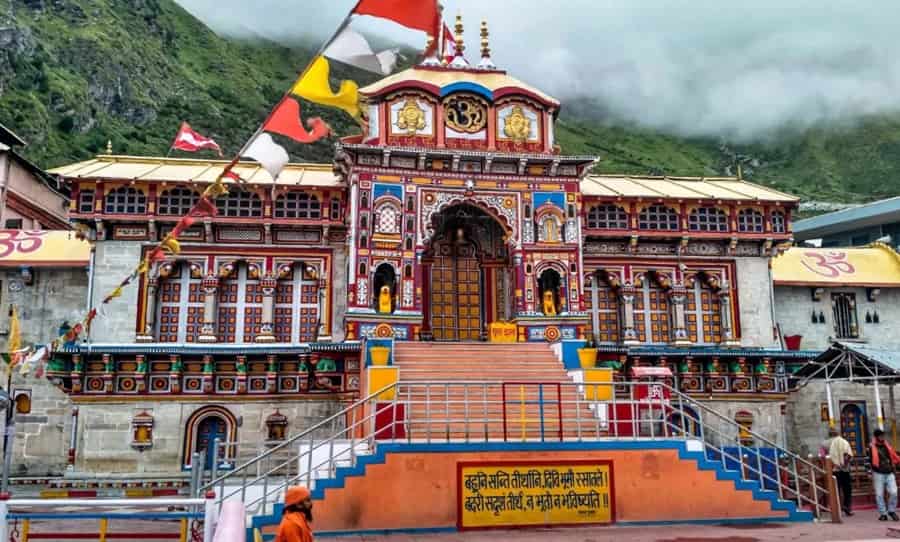Last Updated on October 18, 2024
Badrinath Dham, located in Uttarakhand Chamoli district and along River Alaknanda bank is a much revered religious destination belonging to Lord Badrinarayan who is none other than lord Vishnu. The temple is situated at an altitude of 3,133 meters above sea level. Badrinath Dham is one of the char Dham in the Chota Chardham circuit and is one of the holiest shrines of the Vaishnavites. It is one among the 108 Divya Desam of the Vaishnavites. The main idol at the Badrinath temple is a 3.3-foot tall Shaligram Shila of Lord Vishnu. It is considered one of the most sacred self-manifested idols of the deity. The Yatra season to Badrinath Dham is a six months long season each year, starting from April and ending in the month of November.

Historical Significance
The religious importance of Badrinath temple is deeply linked to its mythical glory and historical significance. The Temple of Badrinath doesn’t have any concrete historical records to support its age but one can find a mention of the Badrinath temple & it’s deity in our ancient Vedic scripture which indicates that the temple had been there during the Vedic era. Some of our ancient texts point out that this temple had been a Buddhist monastery initially and was turned into a Hindu shrine only after Adi Guru Shankaracharya visited the place around 8th century.
The temple architecture and the brightly colored front facade resemble a Buddhist monastery and thus there could be some truth in the above claims. Another story says that Adi guru Shankaracharya had taken help from King Kanakpal, the then Parmar ruler to drive out the Buddhists from the region. The throne of the king of Badrinath got its name from the presiding deity at the temple and devotees visiting the temple paid ritual obeisance to the king as well. These rituals existed until the 19th century. When the Garhwal region was partitioned, the temple of Badrinath came under the jurisdiction of the Britishers. However, the ruler of Garhwal still functioned as the key chair person of the temple management committee. The temple was damaged several times due to the adverse climatic conditions but was also renovated several times. Around the 17th century kings of Garhwal joined hands to expand the temple. After a major damage from the 1803 great Himalayan earthquake, the temple was rebuilt by king of Jaipur.
Legends
The history of the temple is supported by many mythical tales related to Badrinath Dham. According to a legendary tale lord Vishnu had performed rigorous penance at this place. During his deep meditation the lord was ignorant of the inclement weather. His consort, Goddess Lakshmi assumed the shape of a Badri tree and spread over him to protect him from the harsh weather. Lord Vishnu was pleased by her devotion and named the place after her as Badrikashram. In compliance to this legend one would find the deity of Lord Vishnu sitting in a meditative posture within the Badrinath shrine.
Another legend about Badrinath Dham tells that Nar and Narayana; the two sons of Dharam wished to setup their hermitage and expand their religious base at some congenial location amid the spacious Himalayan vales. Nar and Narayana are actually the mythical names for two modern Himalayan mountain ranges. As per the legend, as they went seeking for a suitable place for their hermitage, they chanced upon the other four sites of Panch Badri; i.e. Bridha Badri, Dhyan Badri, Yog Badri and Bhavishya Badri. Finally they came to this location which had two fascinating cold and hot springs behind river Alaknanda. They were elated at the very sight it and named the place as Badri visal. That is how Badrinath Dham came into being.

 Call
Call WhatsApp
WhatsApp Enquiry
Enquiry